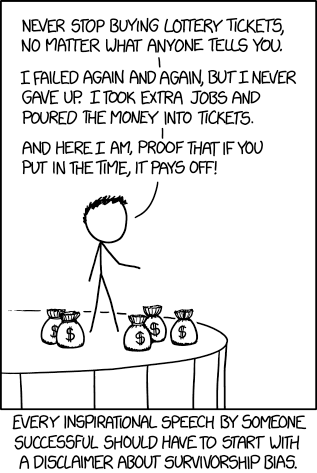 One of the things that we – as workers – hate the most is the micromanager. What is funny is that most people who micromanage others don’t like to be micromanaged themselves. So, why do they do it? Is it effective, despite the backlash? Is it just poor management? Is it a fallback tactic? I can’t claim to have the definitive answers, but here are my thoughts.
One of the things that we – as workers – hate the most is the micromanager. What is funny is that most people who micromanage others don’t like to be micromanaged themselves. So, why do they do it? Is it effective, despite the backlash? Is it just poor management? Is it a fallback tactic? I can’t claim to have the definitive answers, but here are my thoughts.
Micromanaging is when someone in a supervisory capacity has to know what you’re doing at all times. Often, they may even want to dictate those steps that you take to complete your work. Those two don’t always go together and it is important to realize what you’re dealing with if you’re being micromanaged and what issues you are facing if you’re the micromanager.
I’ll start with the second one first. The supervisor who wants to dictate the steps that you do take to do your work likely does not trust you to do the work properly. I’m not talking about workplaces where you need to follow 95 precise steps to brew Coca-Cola, transport radioactive material, or some other precise job. I’m talking about jobs where you are coding a project, preparing a report, writing a paper, documenting incidents, etc. If someone constantly has to shoulder surf or have updates in order to ensure that you are doing things correctly, then they don’t trust you to do the work.
The other kind of supervisor who has to know what you are doing at all times also doesn’t trust you, but it isn’t because they don’t think you can do your job when you’re doing it. It is because they fear that you’re “slacking off” or “cheating the system”. Their idea of Management™ is to make sure that no one gets paid for 1 minute of time more than they are supposed to and that the department is achieving maximum throughput. Now, having the department run efficiently and with great throughput is good management, but squeezing blood from a turnip is not.
I’m going to deal with the unpopular part of this first. First, you should make sure that you – as the worker – are not a problem. Maybe you’re 100% of the problem, maybe you’re 0.01% of the problem, but a mature person will seek to correct what they can in themselves whenever possible. You know the truth, are you slacking off? Do you do the absolute minimum and take long lunches and stand around and talk every time you can? Do you never communicate status so your manager always has to ask you? If so, you might be the cause of your boss’ behavior. Fix it. If you can’t fix it because you hate your job and this is how you cope? Look for another job. Harsh? Sure, but you’ll be happier if you go somewhere that you want to be and enjoy being.
For those micromanagers who are reading this… your turn. You need to fix yourselves. Even if you do have employees slacking off or doing things incorrectly… you’re not helping. In fact, you’re annoying your employees and running yourself ragged with trying to keep track of their minute-by-minute whereabouts. In second fact, you aren’t really managing anything, you’re babysitting it at best. Who have you grown in a position, mentored up? I don’t mean someone who got promoted entirely on their own merits. I mean someone who was average or below average and you mentored and trained them up into a rising star in the company. If you’re honest, you can probably count that number on one hand or maybe no hands. People don’t rise and thrive under a dictator. However, you possibly have legitimate concerns. Let’s take a look at how you could possibly deal with them in a better way.

Maybe people are slacking. Depending on the office culture or your collection of humans, people might be trying to get away with as little as possible. The slacking is on them, but if you micromanage, you’re training people to only work when you’re around and to master the art of looking busy when you aren’t. So, how do you manage your way out of this? This is probably your fault as well. You need to set goals for the results that you want achieved. If you’ve asked for 30 widgets and 30 widgets are getting done, then why are you bearing down on people? On the other hand, if you’ve asked for 30 widgets and only 5 have gotten done, then there is a real issue. At that point, you’ve got to speak to the low performers, coach/train them up, and possibly pursue discipline. Not everyone is a fit with every company.
However, if you’ve asked for 30 widgets and are getting 30 widgets, but you feel like more could be done, then increase the “quota”. If you’ve been measuring all along, you will be able to see if your team is becoming more efficient, less efficient, or stagnating. By being involved at the proper level, you’ll also get a real sense for whether or not your employees are “sandbagging”. But, measuring does not mean demanding or accounting for every second of an employee’s day. People work differently and you need to account for that, but if you’re looking to increase productivity, you’re not doing much more than steadily decreasing your own.
I know that there are people who would bristle at the suggestion that employees aren’t doing their best for the entire day or that there are readers who would believe that I’m advocating for a poor work-life balance. I am a proponent that people should work hard while they are on the clock. If you do that, work-life balance shouldn’t be a problem. If you work hard, taking time off won’t matter because you won’t constantly be behind. If you (and your team) are all doing your best and you’re still behind and there isn’t an obvious point-in-time reason, then you’re understaffed or mismanaged and that’s the manager’s problem. However, I’m not against people who do work more or even work over from time to time to get things done, as I describe in this post from over 9 years ago.
You have to understand, though, that the freedom you are asking for requires that you accept accountability for your work and your work output. It is possible that your department is churning out their 30 widgets, but that is because a handful of people on the team are killing themselves to make it happen. Burning them out so that you can hide in the bathroom and watch TikToks isn’t sustainable and could definitely cause a manager to dig deeper. You will have brought that on yourself.
Any of the environments I’ve described will result in higher than normal turnover, burnout, and lack of innovation. If someone is being dictated to, they’ll never find creative efficiency gains. If a group is being hounded for every second of their time, they’ll never feel safe enough to try and fail some creative new ideas.
Often, though, the consequences of micromanagement are that the manager loses the big picture. The manager’s job is to lead, grow, develop, and put their team in position to be a strategic asset for the company. If the manager is worried about whether Suzy’s bathroom breaks are 5 minutes or less or if Ken starts his knots right-over-left instead of left-over-right, they will not be in the right mindset to think strategically for the mid-to-long term like they should. Honestly, this could be intentional. If the manager was over-promoted and feels more comfortable in their old job, they might easily fall back into habits of dogging the minute-to-minute instead of planning the week-to-week or month-to-month.
So, what do we do about micromanagement? Summing it all up, the TL;DR; is that if you’re a worker being micromanaged, first check your own house. Take a solid look and make sure that you aren’t giving people a good reason to look closer at what you do all day. Once that’s clean, talk to the supervisor or manager. Help them out… manage up. Have the tough talk that you’d prefer not to be micromanaged and see if you can agree to productivity goals and then work hard to meet them. If that goes poorly, deal with it or get a new job.
If you’re in management and someone comes to you, listen. Take an honest look at yourself and see what you can fix or apply. If no one has come to you, but you see yourself in this post, then take a step back. Find some mentors who can give you advice. If you don’t have management mentors, get some. But start with figuring out what productivity that you need and set goals for the department and then step back.
Whether worker or manager, if you work to eliminate micromanagement, stress levels will go down and job satisfaction will go up on both sides of the line.
 During our introduction in the last blog post, we mentioned the “CIA Triad” and gave a quick rundown about what it is. As a reminder, it’s not related to any government agency; rather, it stands for Confidentiality, Integrity, and Availability – three pillars of infosec. Today, let’s zoom in on the first pillar – Confidentiality – and unpack its significance, with a sprinkle of real-world examples and what happens when it fails.
During our introduction in the last blog post, we mentioned the “CIA Triad” and gave a quick rundown about what it is. As a reminder, it’s not related to any government agency; rather, it stands for Confidentiality, Integrity, and Availability – three pillars of infosec. Today, let’s zoom in on the first pillar – Confidentiality – and unpack its significance, with a sprinkle of real-world examples and what happens when it fails.

 One of the things that we – as workers – hate the most is the micromanager. What is funny is that most people who micromanage others don’t like to be micromanaged themselves. So, why do they do it? Is it effective, despite the backlash? Is it just poor management? Is it a fallback tactic? I can’t claim to have the definitive answers, but here are my thoughts.
One of the things that we – as workers – hate the most is the micromanager. What is funny is that most people who micromanage others don’t like to be micromanaged themselves. So, why do they do it? Is it effective, despite the backlash? Is it just poor management? Is it a fallback tactic? I can’t claim to have the definitive answers, but here are my thoughts.
 This week, I was listening to a business podcast and the guest was describing the “techniques for success” that they had used and how they now teach those techniques to others. As I began to wonder how much of this (and all such advice) was attributable to Survivorship Bias and planning this post in my mind, I started to think about what image should go with it. Of course there is a
This week, I was listening to a business podcast and the guest was describing the “techniques for success” that they had used and how they now teach those techniques to others. As I began to wonder how much of this (and all such advice) was attributable to Survivorship Bias and planning this post in my mind, I started to think about what image should go with it. Of course there is a